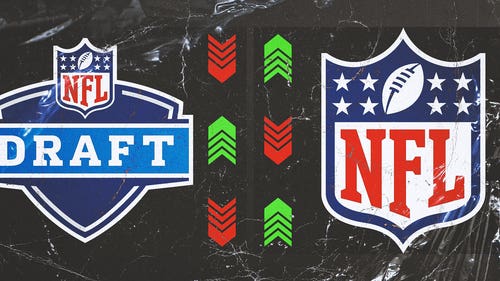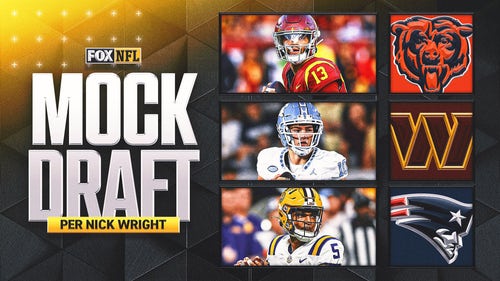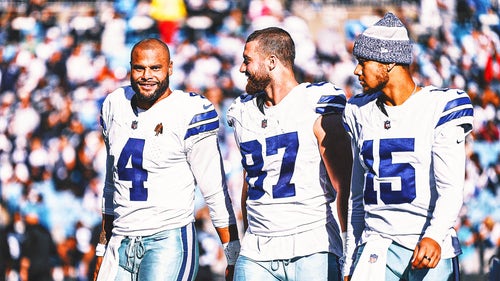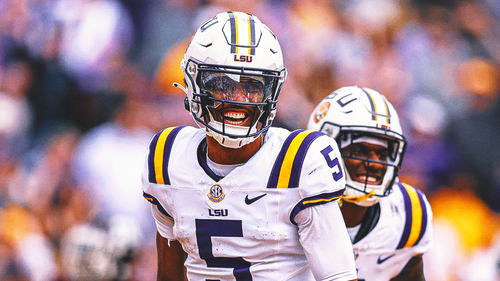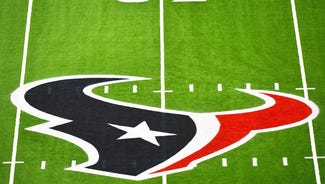
Leinart shows how a can't-miss pro does
Coming into the pros, it was difficult to imagine a more impressively credentialed quarterback than Matt Leinart.
At 6-foot-5, 232 pounds, he’d been playing a pro-style offense since high school, and playing with pros since college. And what a college experience it had been -- a run that began with Leinart as an understudy to Carson Palmer ended with him solidifying USC’s reputation as the premier finishing school for aspiring NFL signal callers.
Unlike most college quarterbacks, Leinart already knew about the media demands, having been a huge star in a America’s second-largest market. Having played on championship teams and for a coach whose mantra was “always compete,” he was also advertised as a guy who knew a thing or two about performing under pressure. Twice he was voted the NCAA’s Quarterback of the Year. His résumé includes awards named for Archie Griffin and Johnny Unitas, the inaugural Manning Award and that hunk of bronze known as the Heisman. Matt Leinart was the right guy from the right system.
But five years later, he’s another bust.
I get a kick out of these stories that have Pete Carroll signing him as a backup for the Seahawks. As it turns out, playing that extra year for Carroll at USC cost Leinart nothing but money. If he’d had the good sense to leave college after winning the Heisman in 2004, he’d likely have been the first player drafted -- 212 spots ahead of the guy who just beat him out in Arizona -- and grist for a great barroom argument. Who was the Biggest Bust Ever -- Ryan Leaf, JaMarcus Russell or Leinart?
As it happens, Leinart only went with the 10th pick in the 2006 draft. What’s more, he can take comfort in the fact that he’s got company. A lot of company, in fact.
And that’s the real story here. The NFL draft has become an industry, a year-round endeavor. Teams spend more time evaluating talent than the GNP of most moderately-sized republics. But the evidence suggests they still don’t have a clue as to who’ll make a good quarterback, much less a great one. Selecting a quarterback -- the most important player on the field -- is neither an art, nor science. A good bit of it remains guesswork, sheer luck.
It’s not just a guy like Leinart, 3 for 5 for 14 yards in Arizona's preseason finale Thursday. It’s the guy he couldn’t replace. Kurt Warner, who belongs in the Hall of Fame, went famously undrafted in 1994, a year that saw greats like Heath Shuler and Trent Dilfer go with the third and sixth picks, respectively.
Go figure. Tom Brady was a sixth-round pick. Joe Montana went in the third round, Brett Favre in the second. Drew Brees was another second-round pick. That was the year Michael Vick went first in the entire draft.
And what do Carson Palmer, Byron Leftwich, Kyle Boller, Dave Ragone, Chris Simms, Seneca Wallace, Brian St. Pierre, Drew Henson, Brooks Bollinger, Kliff Kingsbury, Gibran Hamdan and Ken Dorsey have in common?
They were all picked in 2003, the year Tony Romo went undrafted.
“Quarterback is the toughest position to pick,” says Pete Russell, a veteran NFL scout who worked for the Rams, Texans and Panthers.
Given the dollars involved -- with $24 million guaranteed for Alex Smith in ‘05, $32 million guaranteed for JaMarcus Russell in ’07 and $50 million now guaranteed for Sam Bradford -- it’s also the riskiest.
“The Panthers’ whole mindset was not to draft a quarterback in the first round,” adds Russell.
Looking back, it was pretty good strategy. Before he became an interception machine, Jake Delhomme led Carolina to a Super Bowl. He, too, was undrafted.
With the combines and pro days and all the scouting reports, there’s a sense that a player’s ability can be defined with numerical exactitude. Who could forget the sight of JaMarcus Russell’s audition, throwing 60 yards from his knees? It turned out to be the highlight of his NFL career, such as it was. All that arm strength didn’t make him a pro quarterback anymore than it helped Jim Druckenmiller a decade before.
In general, accuracy beats distance, savvy trumps strength. Quarterback isn't like the other positions. He's judged on his numbers, of course. But his virtues are not easily quantified, beginning with leadership.
“Physically, we’re developing better passers than ever before,” says Gil Brandt, who is basically the father of modern scouting. “But mental make-up is more important than physical.”
Most quarterbacks require an apprenticeship. Sure, there are exceptions -- Peyton Manning, of course, but more recently, and less spectacularly, Matt Ryan and Joe Flacco. More typical, however, is Tim Couch, picked first in ’99. He was sacked 56 times as a rookie.
Pete Russell recalls an even more egregious example from his time with the Texans: David Carr, selected first in 2002. “High picks go to bad teams,” he said. “If that kid could’ve had a chance to sit and gain some confidence, he might’ve been OK.”
Carr made history his rookie year: sacked a record 76 times.
Nobody likes to sit. But you can’t help but think it was the best thing for a lot of young quarterbacks, from Aaron Rodgers to Tom Brady. They got a chance to watch and learn.
Matt Leinart just watched, pro-style.








































































































































